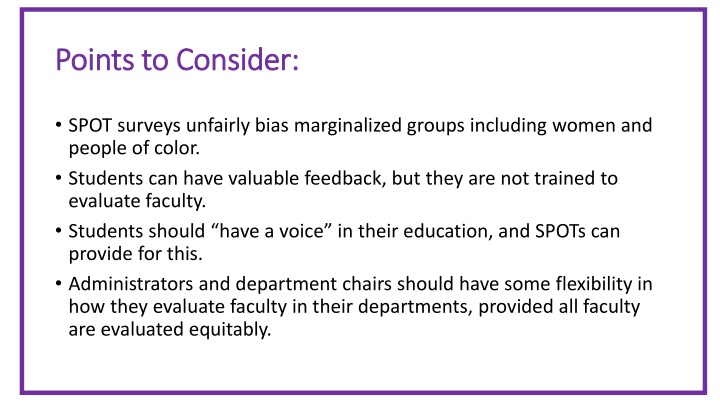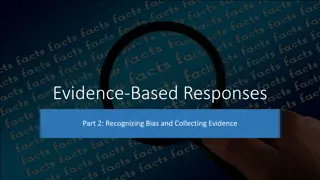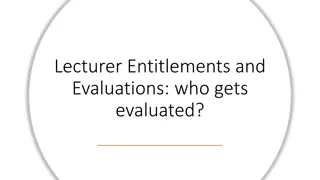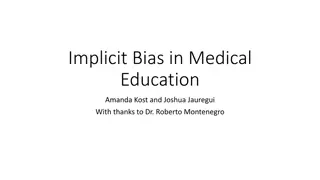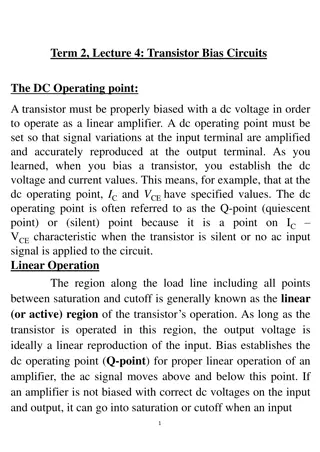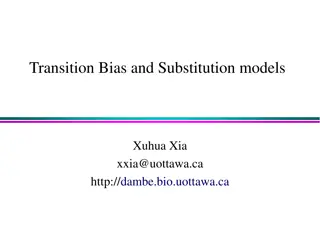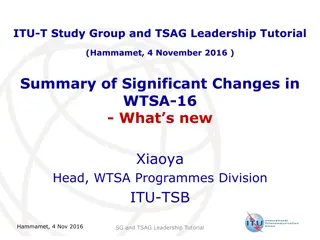Addressing Bias in Student Evaluations of Faculty: Considerations and Resolutions
SPOT surveys can unfairly bias marginalized groups in academia, such as women and people of color, impacting faculty evaluations. While student feedback is valuable, students may not be equipped to assess teaching effectively. Institutions should use SPOT data for reflection rather than consequential decisions. TCU emphasizes Diversity, Equity, and Inclusion and discourages over-reliance on student evaluations. Research highlights how student evaluations disadvantage certain faculty, calling for a reevaluation of their use in assessments.
Download Presentation

Please find below an Image/Link to download the presentation.
The content on the website is provided AS IS for your information and personal use only. It may not be sold, licensed, or shared on other websites without obtaining consent from the author.If you encounter any issues during the download, it is possible that the publisher has removed the file from their server.
You are allowed to download the files provided on this website for personal or commercial use, subject to the condition that they are used lawfully. All files are the property of their respective owners.
The content on the website is provided AS IS for your information and personal use only. It may not be sold, licensed, or shared on other websites without obtaining consent from the author.
E N D
Presentation Transcript
Points to Consider: Points to Consider: SPOT surveys unfairly bias marginalized groups including women and people of color. Students can have valuable feedback, but they are not trained to evaluate faculty. Students should have a voice in their education, and SPOTs can provide for this. Administrators and department chairs should have some flexibility in how they evaluate faculty in their departments, provided all faculty are evaluated equitably.
EEC Resolution on appropriate use of SPOTs EEC Resolution on appropriate use of SPOTs TCU is committed to Diversity, Equity, and Inclusion and seeks to promote a campus environment that is welcoming for all and free of bias. 1Academic research, however, demonstrates that student evaluations of teaching systematically disadvantage faculty from marginalized groups, 2including women and minorities3, and are poor indicators of teaching quality4. Therefore, while SPOT data may be useful in (a) helping faculty members reflect upon and improve their teaching and (b) giving students an opportunity to voice opinions about their class experiences, SPOT data should not be used by colleges or departments in consequential decisions, such as annual review, tenure and promotion, or merit pay.
References Cited: References Cited: 1Texas Christian University Strategic Plan. (2019). https://inclusion.tcu.edu/about/strategic-plan/ 2Statement on Student Evaluations of Teaching. (Sep 2019). American Sociological Association. 3Mitchell, Kristina M.W., Martin, Jonathan. (July 2018). Gender Bias in Student Evaluations. Political Science & Politics. 51(3), 648-652. 4Supiano, Becky. (Sep 9, 2019). Sociologists Caution Colleges Not to Over-Rely on Student Evaluations of Teaching. Chronicle of Higher Education.
Additional References: Additional References: Basow, S. A., & Silberg, N. T. (1987). Student evaluations of college professors: Are female and male professors rated differently? Journal of Educational Psychology, 79(3), 308-314. Falkoff, Michelle. (April 25, 2018). Why We Must Stop Relying on Student Ratings of Teaching. Chronicle of Higher Education. Flaherty, Colleen, Teaching Eval Shake-up (May 22, 2018). InsideHigherEd. Merritt, Deborah Jones. (January 2007). Bias, the Brain, and Student Evaluations of Teaching. Ohio State Public Law Working Paper No. 87. Reid, Landon D., 2010. The Role of Perceived Race and Gender in the Evaluation of College Teaching on RateMyProfessors.com. Journal of Diversity in Higher Education. 3(3), 137-152.
